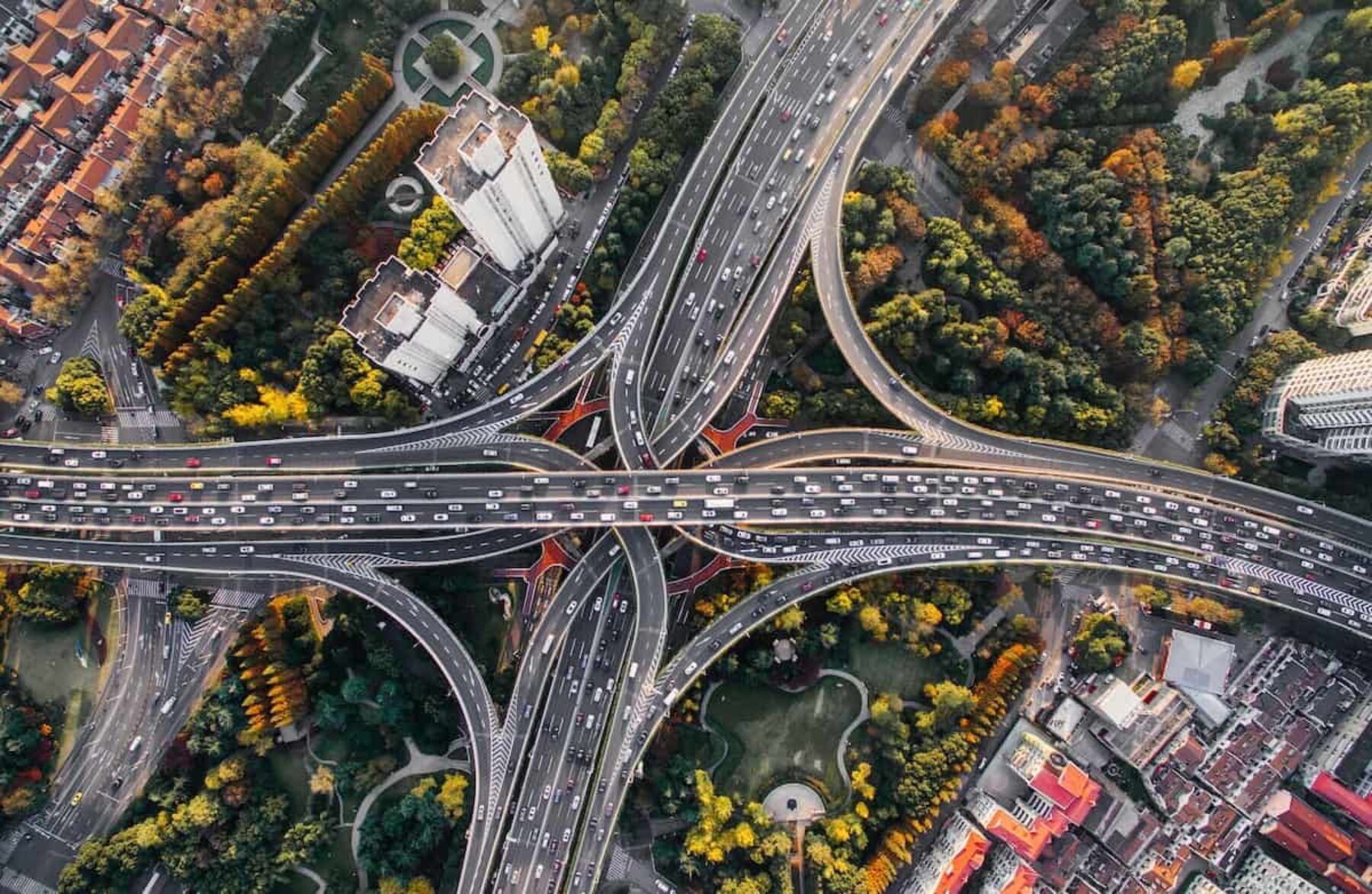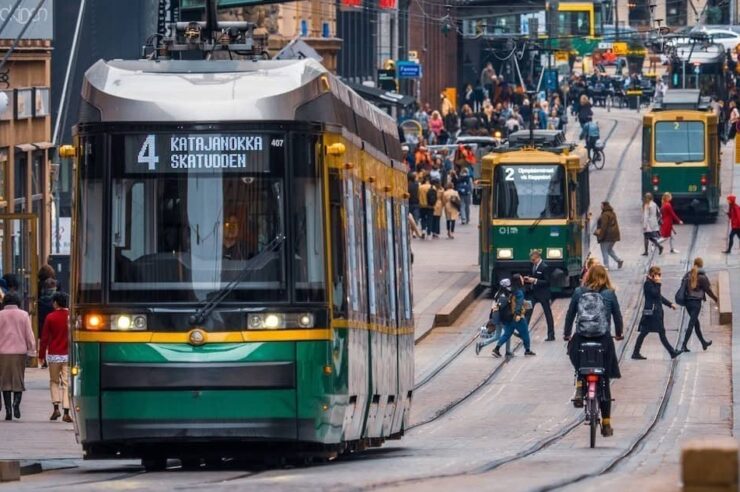Permanently driving cars out of cities can help save lives, stabilise the climate, boost the economy and make urban areas more liveable. But how best to do it? Kimberly Nicholas, associate professor of sustainability science at Lund University, Sweden, explains what her research reveals
Question: what do the following statistics have in common?
- The second largest (and growing) source of climate pollution in Europe.
- The leading killer of children in the US and Europe.
- A principal cause of stress-inducing noise pollution and life-shortening air pollution in European cities.
- A leading driver of the widening gap between rich and poor urban residents.
Answer: the vehicles on our streets, primarily the not-so-humble passenger car.
Despite the (slow) migration to electric-powered cars, consumer trends are making driving even more wasteful and unequal. A recent analysis found the emissions saved from electric cars have been more than cancelled out by the increase in gas-guzzling Sport Utility Vehicles (SUVs). Around the world, SUVs alone emit more carbon pollution than Canada or Germany, and are causing a bigger increase in climate pollution than heavy industry.
While cars are sometimes necessary for people’s mobility and social inclusion needs – not least those with disabilities – car-centric cities particularly disadvantage the already-marginalised. In the UK, women, younger and older people, those from minority communities and disabled people are concentrated in the lowest-income households, of which 40 per cent do not have a car. In contrast, nearly 90 per cent of the highest-income households own at least one car.
So the driving habits of a minority impose high costs on society, and this is especially true in cities. Copenhagen, for example, has calculated that whereas each kilometre cycled benefits society to the tune of €0.64 (£0.53), each kilometre driven incurs a net loss of -€0.71 (-£0.59), when impacts on individual wellbeing (physical and mental health, accidents, traffic) and the environment (climate, air and noise pollution) are accounted for.
Each kilometre travelled where a car is replaced by a bicycle generates €1.35 (£1.12) of social benefits – of which only a few cents would be saved by switching from a fossil-fuelled to an electric-powered car, according to this analysis.
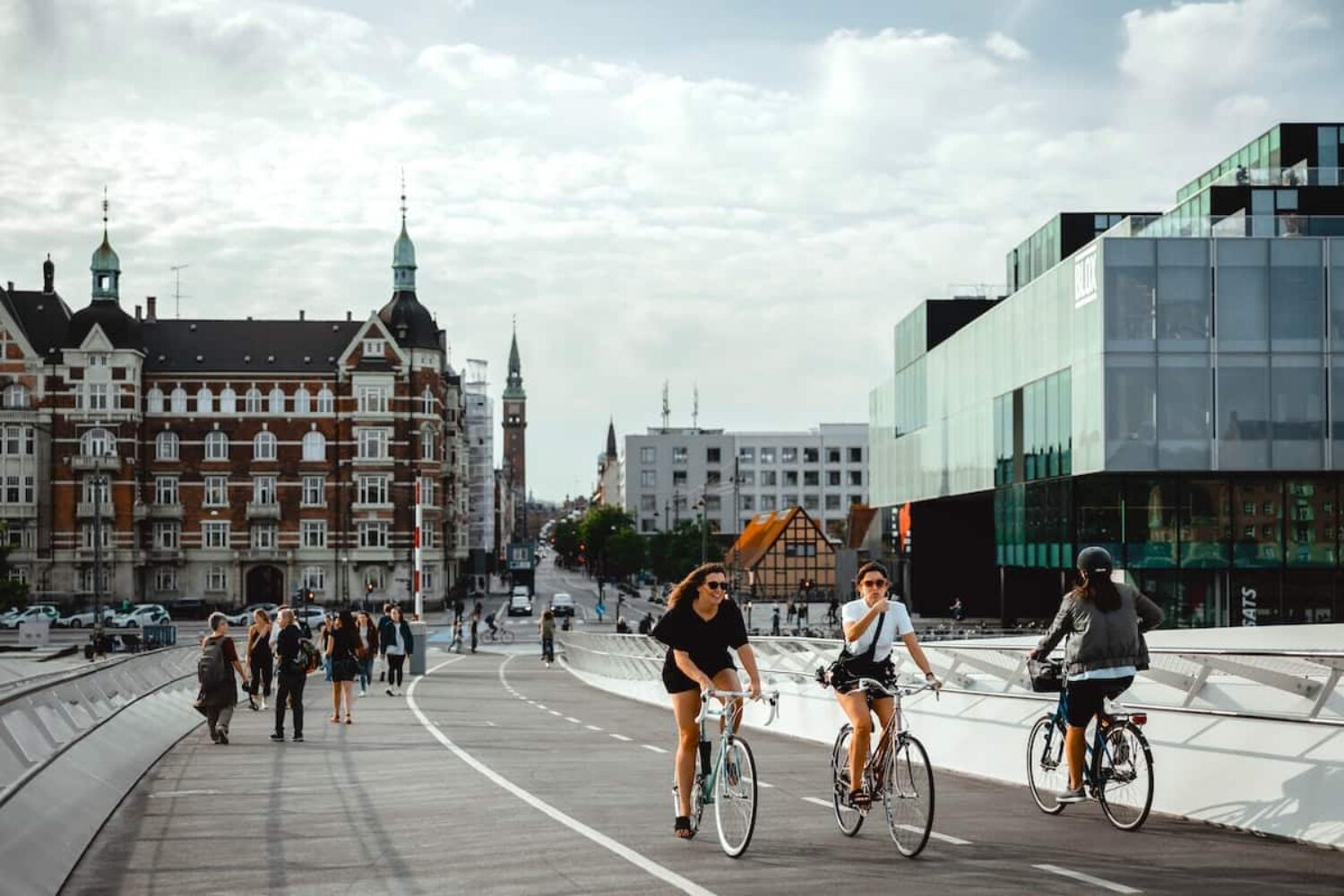
Data from Copenhagen suggests that cycling benefits society to the tune of €0.64 (£0.53) per km. Image:
How to reduce car use in cities
Half a century ago, the Danish capital was dominated by cars. But following grassroots campaigns to change policies and streets, including replacing car parking with safe, separated bike lanes, Copenhagen has increased its biking share of all trips from 10 per cent in 1970 to 35 per cent today. In 2016, for the first time, more bicycles than cars made journeys around the city over the course of that year.
But while many other car-limiting initiatives have been attempted around the world, city officials, planners and citizens still do not have a clear, evidence-based way to reduce car use in cities. Our latest research, carried out with Paula Kuss at the Lund University Centre for Sustainability Studies and published in Case Studies on Transport Policy, seeks to address this by quantifying the effectiveness of different initiatives to reduce urban car use.
Our study ranks the 12 most effective measures that European cities have introduced in recent decades, based on real-world data on innovations ranging from the ‘carrot’ of bike and walk-to-work schemes to the ‘stick’ of removing free parking. The ranking reflects cities’ successes not only in terms of measurable reductions in car use, but in achieving improved quality of life and sustainable mobility for their residents.
In all, we have screened nearly 800 peer-reviewed reports and case studies from throughout Europe, published since 2010, seeking those that quantified where and how cities had successfully reduced car use. The most effective measures, according to our review, are introducing a congestion charge, which reduces urban car levels by anywhere from 12 per cent to 33 per cent, and creating car-free streets and separated bike lanes, which has been found to lower car use in city centres by up to 20 per cent.
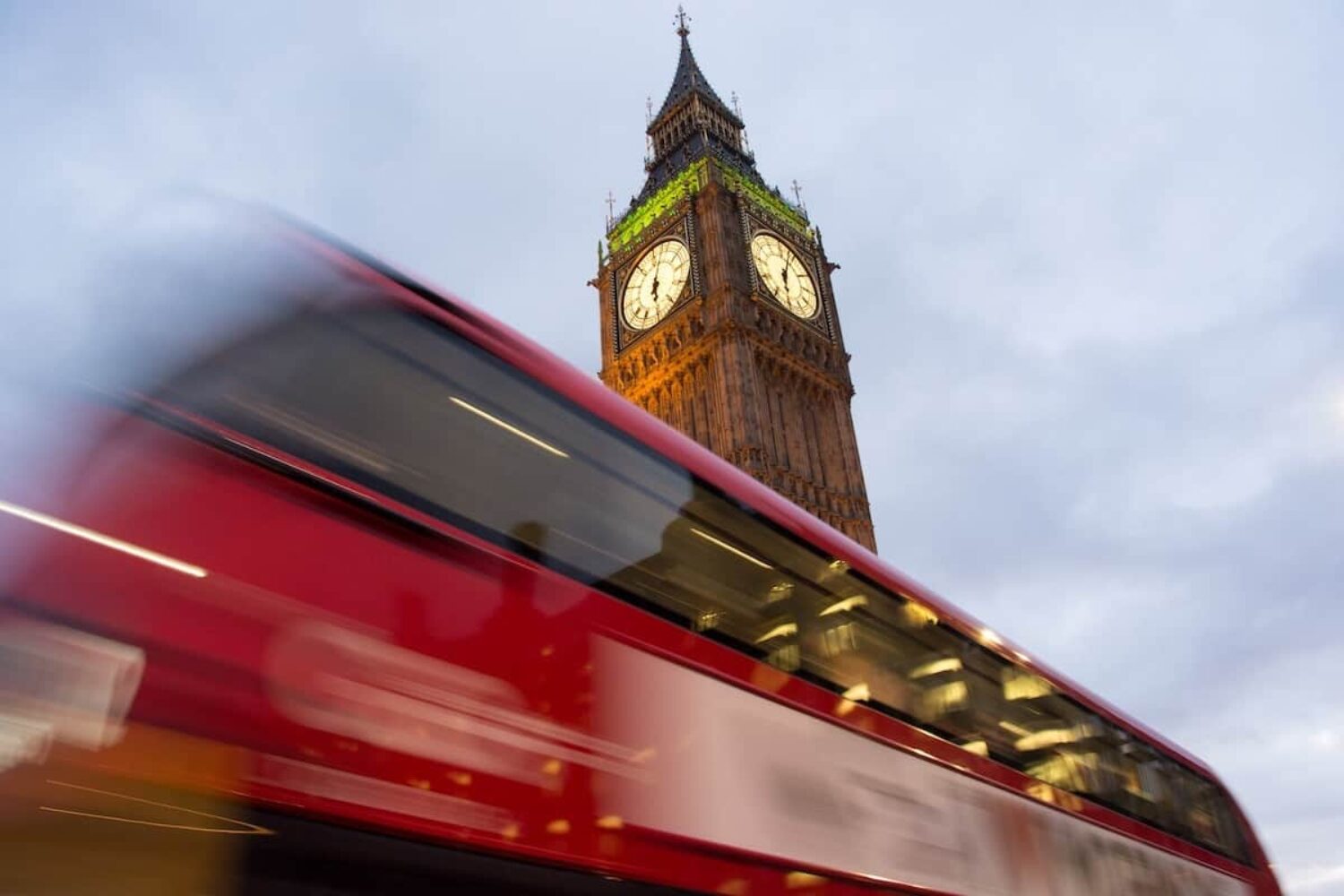
The London congestion charge has cut traffic by a reported 33 per cent. Image: Mariana Martin
The 12 best ways to reduce city car use
1. Congestion charges
The most effective measure identified by our research entails drivers paying to enter the city centre, with the revenues generated going towards alternative means of sustainable transport.
London, an early pioneer of this strategy, has reduced city centre traffic by a whopping 33 per cent since the charge’s introduction by the city’s first elected mayor, Ken Livingstone, in February 2003. The fixed-charge fee (with exemptions for certain groups and vehicles) has been raised over time, from an initial £5 per day up to £15 since June 2020. Importantly, 80 per cent of the revenues raised are used for public transport investments.
Other European cities have followed suit, adopting similar schemes after referenda in Milan, Stockholm and Gothenburg – with the Swedish cities varying their pricing by day and time. But despite congestion charges clearly leading to a significant and sustained reduction of car use and traffic volume, they cannot by themselves entirely eliminate the problem of congestion, which persists while the incentives and infrastructure favouring car use remain.
2. Parking and traffic controls
In a number of European cities, regulations to remove parking spaces and alter traffic routes – in many cases, replacing the space formerly dedicated to cars with car-free streets, bike lanes and walkways – has proved highly successful. For example, Oslo’s replacement of parking spaces with walkable car-free streets and bike lanes was found to have reduced car usage in the centre of the Norwegian capital by up to 19 per cent.
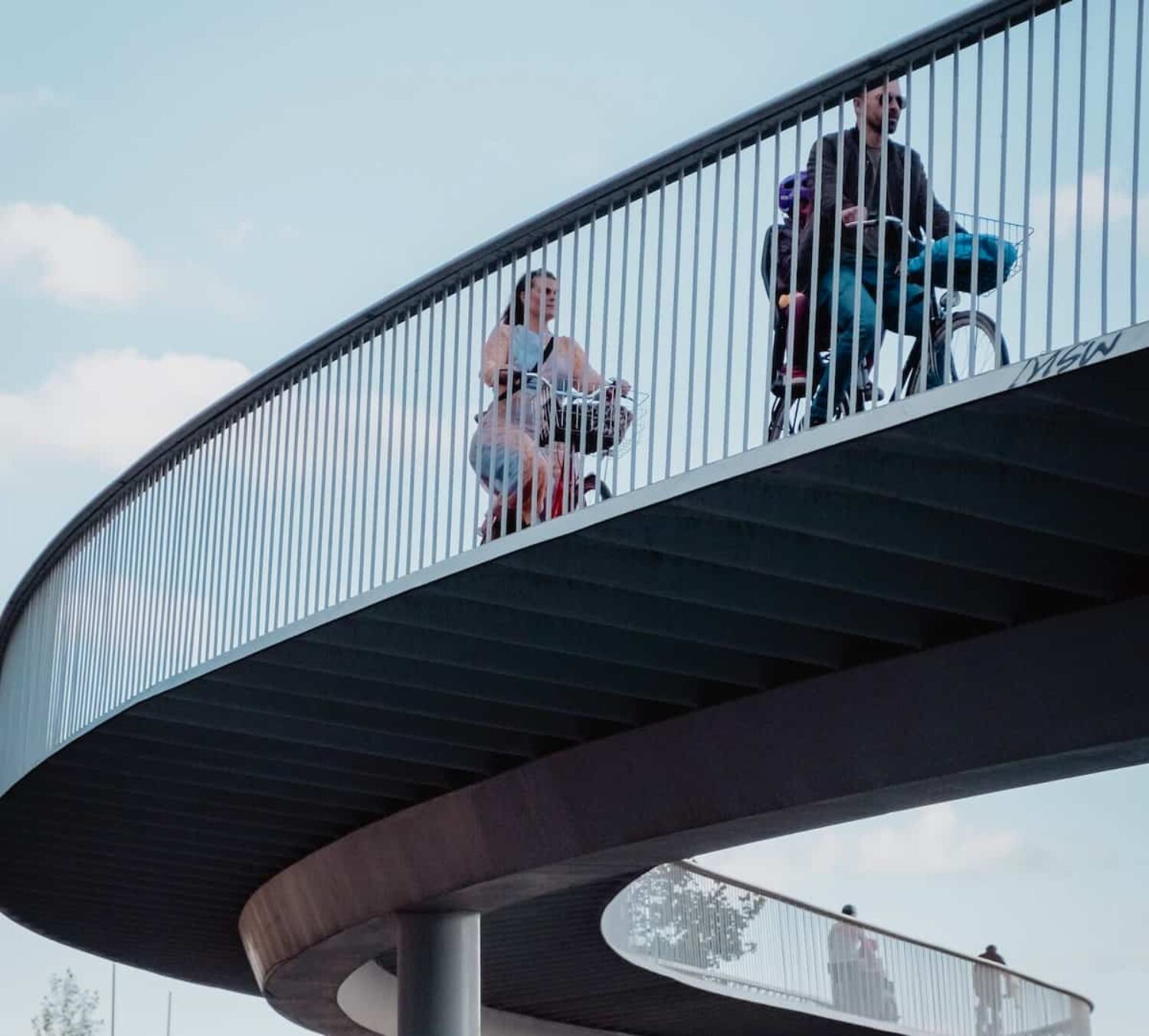
Copenhagen has increased bike traffic from 10 per cent in 1970 to 35 per cent today. Image: Febiyan
3. Limited traffic zones
Rome, traditionally one of Europe’s most congested cities, has shifted the balance towards greater use of public transport by restricting car entry to its centre at certain times of day to residents only, plus those who pay an annual fee. This policy has reduced car traffic in the Italian capital by 20 per cent during the restricted hours, and 10 per cent even during unrestricted hours when all cars can visit the centre. The violation fines are used to finance Rome’s public transport system.
4. Mobility services for commuters
The most effective carrot-only measure identified by our review is a campaign to provide mobility services for commuters in the Dutch city of Utrecht. Local government and private companies collaborated to provide free public transport passes to employees, combined with a private shuttle bus to connect transit stops with workplaces. This programme, promoted through a marketing and communication plan, was found to have achieved a 37 per cent reduction in the share of commuters travelling into the city centre by car.
5. Workplace parking charges
Another effective means of reducing the number of car commuters is to introduce workplace parking charges. For example, a large medical centre in the Dutch port city of Rotterdam achieved a 20-25 per cent reduction in employee car commutes through a scheme that charged employees to park outside their offices, while also offering them the chance to ‘cash out’ their parking spaces and use public transport instead. This scheme was found to be around three times more effective than a more extensive programme in the UK city of Nottingham, which applied a workplace parking charge to all major city employers possessing more than ten parking spaces. The revenue raised went towards supporting the Midlands city’s public transport network, including expansion of a tram line.

Rome, which was notorious for congestion, has cut traffic by 20 per cent. Image: Claudio Hirschberger
6. Workplace travel planning
Programmes providing company-wide travel strategies and advice to encourage employees to end their car commutes have been widely used in cities across Europe. A major study, published in 2010, assessing 20 cities across the UK found an average of 18 per cent of commuters switched from car to another mode after a full range of measures were combined – including company shuttle buses, discounts for public transport and improved bike infrastructure – as well as reduced parking provision.
In a different programme, Norwich achieved near-identical rates by adopting a comprehensive plan but without the discounts for public transport. These carrot-and-stick efforts appear to have been more effective than Brighton & Hove’s carrot-only approach of providing plans and infrastructure such as workplace bicycle storage, which saw a 3 per cent shift away from car use.
7. University travel planning
Similarly, university travel programmes often combine the carrot of promotion of public transport and active travel with the stick of parking management on campus. The most successful example highlighted in our review was achieved by the University of Bristol, which reduced car use among its staff by 27 per cent while providing them with improved bike infrastructure and public transport discounts.
A more ambitious programme in the Spanish city of San Sebastián targeted both staff and students at Universidad del País Vasco. Although it achieved a more modest reduction rate of 7.2 per cent, the absolute reduction in car use was still substantial from the entire population of university commuters.
8. Mobility services for universities
The Sicilian city of Catania used a carrot-only approach for its students. By offering them a free public transport pass and providing shuttle connections to campus, the city was found to have achieved a 24 per cent decrease in the share of students commuting by car.
9. Car sharing
Perhaps surprisingly, car sharing turns out to be a somewhat divisive measure for reducing car use in cities, according to our analysis. Such schemes, where members can easily rent a nearby vehicle for a few hours, have showed promising results in Bremen, Germany and Genoa, Italy, with each shared car replacing between 12 and 15 private vehicles, on average. Their approach included increasing the number of shared cars and stations, and integrating them with residential areas, public transport and bike infrastructure.
Both schemes also provided car sharing for employees and ran awareness-raising campaigns. But other studies point to a risk that car sharing may, in fact, induce previously car-free residents to increase their car use. We therefore recommend more research into how to design car sharing programmes that truly reduce overall car use.

Brighton has used the carrot approach to reduce traffic - and had some success. Image: Martin Forster
10. School travel planning
Two English cities, Brighton & Hove and Norwich, have used (and assessed) the carrot-only measure of school travel planning: providing trip advice, planning and even events for students and parents to encourage them to walk, bike or carpool to school, along with providing improved bike infrastructure in their cities. Norwich found it was able to reduce the share of car use for school trips by 10.9 per cent using this approach, while Brighton’s analysis found the impact was about half that much.
11. Personalised travel plans
Many cities have experimented with personal travel analysis and plans for individual residents, including Marseille in France, Munich in Germany, Maastricht in the Netherlands and San Sebastián in Spain. These programmes – providing journey advice and planning for city residents to walk, bike or use (sometimes discounted) public transport – are found to have achieved modest-sounding reductions of 6-12 per cent.
However, since they encompass all residents of a city, as opposed to smaller populations of, say, commuters to school or the workplace, these approaches can still play a valuable role in reducing car use overall. (San Sebastián introduced both university and personalised travel planning in parallel, which is likely to have reduced car use further than either in isolation.)
12. Apps for sustainable mobility
Mobile phone technology has a growing role in strategies to reduce car use. The Italian city of Bologna, for example, developed an app for people and teams of employees from participating companies to track their mobility. Participants competed to gain points for walking, biking and using public transport, with local businesses offering these app users rewards for achieving points goals.
There is great interest in such gamification of sustainable mobility – and at first glance, the data from the Bologna app looks striking. An impressive 73 per cent of users reported using their car less. But unlike other studies which measure the number or distance of car trips, it is not possible to calculate the reduction of distance travelled or emissions from this data, so the overall effectiveness is unclear. For example, skipping one short car trip and skipping a year of long driving commutes both count as driving less.
While mobility data from apps can offer valuable tools for improved transport planning and services, good design is needed to ensure that smart solutions actually decrease emissions and promote sustainable transport, because the current evidence is mixed. For instance, a 2021 study found that after a ride-hailing service such as Uber or Lyft enters an urban market, vehicle ownership increases – particularly in already car-dependent cities – and public transport use declines in high-income areas.
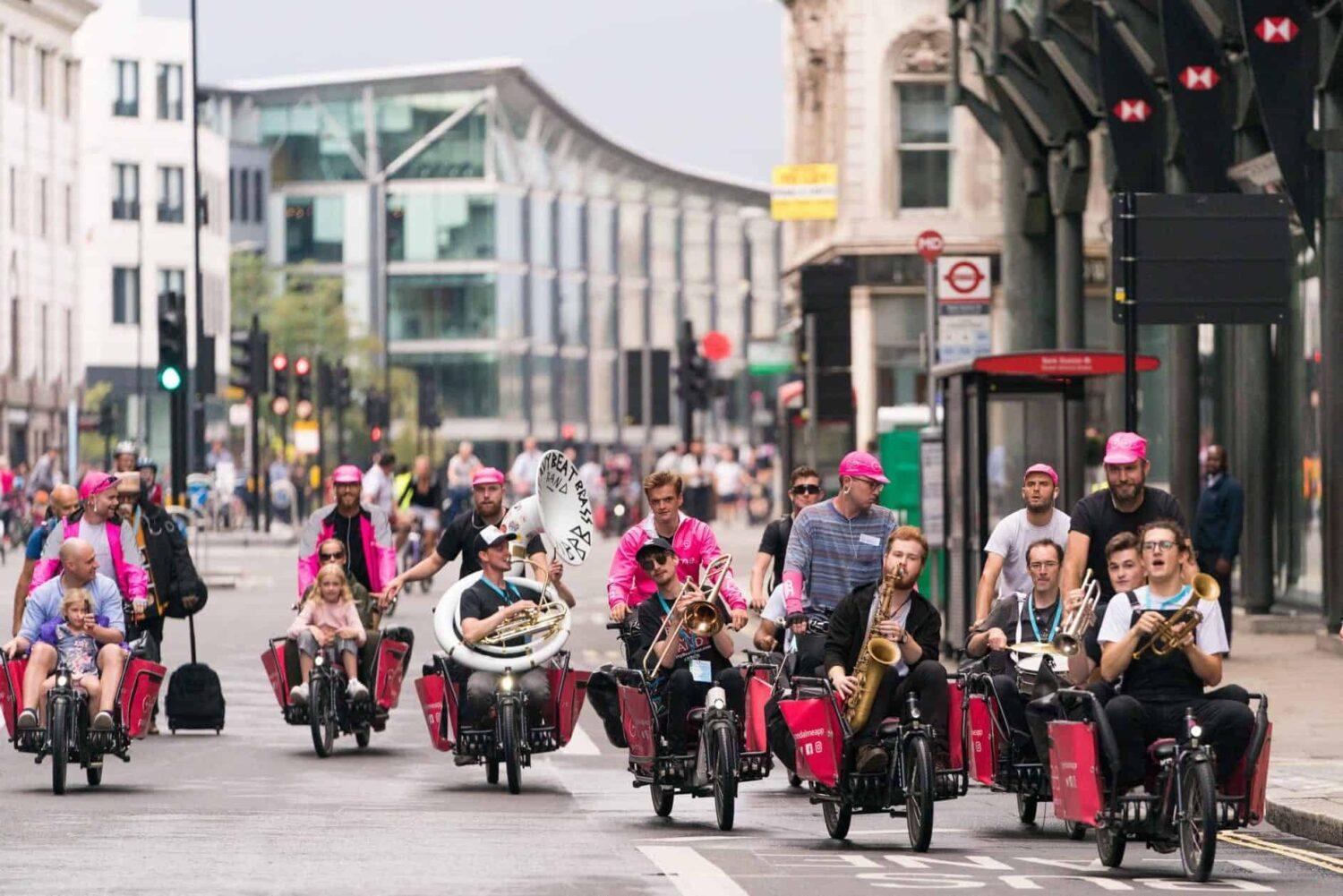
Using a bike instead of a car generates £1.12 of social benefits per km, data suggests. Image: Pedal Me
No silver bullet solution
The research is clear: to improve health outcomes, meet climate targets and create more liveable cities, reducing car use should be an urgent priority. Yet many governments in the US and Europe continue to heavily subsidise driving through a combination of incentives such as subsidies for fossil fuel production, tax allowances for commuting by car, and incentives for company cars that promote driving over other means of transport. Essentially, such measures pay polluters while imposing the social costs on wider society.
City leaders have a wider range of policy instruments at their disposal than some might realise – from economic instruments such as charges and subsidies, to behavioural ones like providing feedback comparing individuals’ travel decisions with their peers’. Our study found that more than 75 per cent of the urban innovations that have successfully reduced car use were led by a local city government – and in particular, those that have proved most effective, such as congestion charges, parking and traffic controls, and limited traffic zones.
But an important insight from our study is that narrow policies don’t seem to be as effective – there is no silver bullet solution. The most successful cities typically combine a few different policy instruments, including both carrots that encourage more sustainable travel choices, and sticks that charge for, or restrict, driving and parking.
Kimberly Nicholas is associate professor of sustainability science at Lund University, Sweden.
This article is republished from The Conversation under a Creative Commons license. Read the original article.
Main image: Denys Nevozhai
![]()
